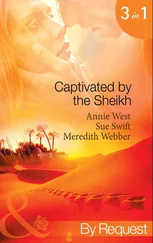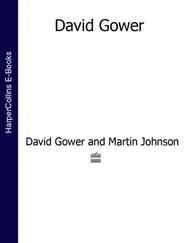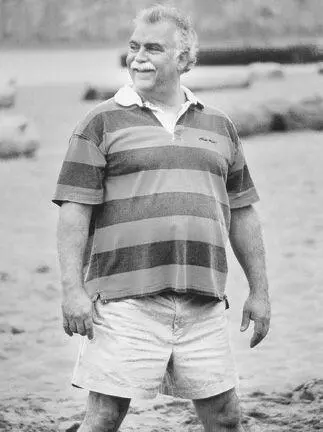
Jim Fulton, former Member of Parliament and now executive director of the David Suzuki Foundation, at play
All hell broke loose. Some thought Jim had pulled a weapon. In the pandemonium, Jim walked out to address the waiting media. It was a sensational stunt he claims spurred Nielsen to act and let the Babine sockeye through to spawn. But it also led to the passage of “the Fulton Rule,” which forbids a parliamentarian from carrying anything into the House that can be used as a weapon. Jim says he is proud of the fact that at the end of the species' next four-year cycle, the sockeye run in the Babine was one of the largest in recent history.
Jim was a serious politician and served his electorate well, as shown by his steadily increasing share of the vote through four elections. But it was on tough national issues — debates that lasted for years — that Jim really demonstrated his strength and vision of Canada.
In 1981, he successfully led the constitutional debate for the NDP in the House to secure the recognition and affirmation of aboriginal and treaty rights. For the next twelve years, Jim led the constitutional fight for the Nisga'a in Parliament, and today they have the first modern-day treaty in Canada.
Jim focused the battle on the floor of the House to save South Moresby, known to the Haida as Gwaii Haanas. It was his motion that was unanimously passed in Parliament and that triggered the release of $140 million to “seal the deal.”
For five years, Jim debated Prime Minister Trudeau's decision to allow Amax Corporation to dump 100 million tons of toxic waste into Canada's pristine Pacific fishing grounds. Jim won, the dumping was halted, and the House ruled that the authorization of the dumping was an abuse of power. It was a remarkable story of tenacity and courage.
During the Gulf War, Jim exposed Canada's illegal production and testing of nerve gas at Defence Research in Suffield, Alberta. And long before Kyoto, Jim's work with Paul Martin and David MacDonald on climate change led to an all-party report calling for 20 percent cuts from 1990 levels of greenhouse gas emissions by 2005.
When Jim decided to end his political career after fifteen years, his departure was eloquently lamented by columnists and colleagues on both sides of the House.
I was incredulous but delighted when Jim applied to become executive director of our foundation. We had no track record as an organization, and we faced a huge challenge in raising the money to do our projects. I thought he was just checking around to see what possibilities were available, but he insisted he wanted the job. It was flattering that he would consider us, but I joked to him that if he had a gender change, the decision would be a slam dunk; I was committed to hiring a woman, and I told our board I favored a female candidate.
But during our deliberations, it became clear that Jim's track record as a committed environmentalist, his experience as a politician, the high esteem he commanded from First Nations and communities, his irresistible personality, and his exuberant energy made him the best choice. Our final decision was unanimous, and we were thrilled when Jim accepted our offer. We could pay him only a fraction of what he could command elsewhere, but when I apologized, he replied that he would get a pension from his years as a member of Parliament, and besides, “we have to be lifers on these issues.”
By the time we hired him, we had already begun to acquire the financial support that enabled us to move to a new office on Fourth Avenue in Vancouver, in the heart of the Kitsilano neighborhood that had been a hippie magnet during the 1960s and '70s. It was an ideal location, and the building, built and owned by businessman Harold Kalke, is heated and cooled through geothermal heat-exchange pipes driven into the earth.
During the '60s and '70s, when I had an active genetics research program at UBC, the people in the lab worked and played together, a surrogate family. When I walked into our offices at the foundation, I felt a similar joy. Here were people earning a decent living wage and believing they were working toward a better world.
Jim came into the job with great vigor and soon launched projects as if we already had the money. I'm still hostage to my early years of poverty, but he had faith that we would raise the necessary funds. And he was right, but in the beginning, I was very nervous about all the spending. We were a brand-new, tiny organization with big plans; less than a year after opening our doors, we had a list of ten project areas we eventually wanted to cover.
If we were going to be effective in communicating with the public, we had to know something about what motivates people to change their behavior. After all, we would be going up against corporations such as the automobile, fossil fuel, forestry, and pharmaceutical industries, which spend billions on advertising and public relations. So we sponsored a conference in May 1995 and invited people who have studied and helped influence social change to share their insights; those talks were published as “Tools for Change,” a document that has infused the way we do our work.
These days we are bombarded by media stories and headlines crying that the economy is the bottom line and should dictate the way we behave, our priorities, and our sacrifices. That never made sense to me — we know we are biological creatures, that if we don't have clean air, water, soil and energy, we cannot lead healthy, productive lives — so we commissioned John Robinson, head of the Sustainable Development Research Institute at UBC, to write “Living Within Our Means,” which outlined humankind's fundamental needs and the real bottom line of sustainability.
AS WE BEGAN TO scope out our first project on fisheries, it became the model for later work. Salmon are iconic animals for aboriginal peoples on both the Pacific and Atlantic coasts of North America. If northern cod pulled Europeans to the shores of Newfoundland for five hundred years, the five species of Pacific salmon — sockeye, pink, chum, chinook (or spring), and coho — lie at the heart of Canada's coastal First Nations cultures, nourishing them physically and spiritually.
In thousands of rivers and streams along the west coast of North America, the return of salmon to their natal waters — in numbers that dwarf those of the fabled bison and passenger pigeons in the past and the caribou and wildebeest today — is one of nature's greatest spectacles. But salmon had disappeared from hundreds of rivers, and runs in many others were dropping steeply. Urban development, farming, logging, pollution, dams, and fishing had deeply affected populations that once flourished from California to Alaska; now they were maintained in large numbers only in B.C. and Alaska. As well, ocean-bottom trawling was destroying habitat crucial to marine biodiversity; a roe fishery to supply Japanese markets was devastating herring populations that were critical feed for many species, including salmon; salmon aquaculture was being touted as a replacement for wild populations.
We asked a group of distinguished experts to meet and discuss the nature of the problem, its primary causes and potential solutions. We then sought a more detailed analysis; Carl Walters, a world-renowned fisheries authority at the University of British Columbia, accepted our invitation to write a scientifically based evaluation of the state of Pacific salmon. Carl brought the analytic powers of computers to the fields of ecology and fisheries management and was known for his hard-nosed approach and fearlessness in telling it like it is. His report was extensively reviewed by scientists and fishermen before publication to ensure its accuracy and credibility.
Читать дальше
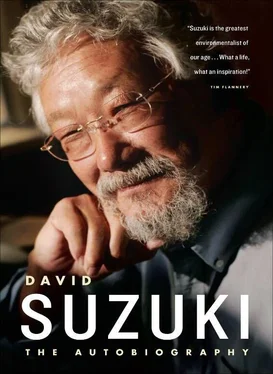

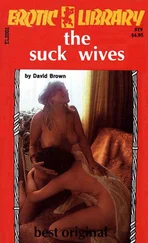
![David Jagusson - Devot & Anal [Hardcore BDSM]](/books/485905/david-jagusson-devot-anal-hardcore-bdsm-thumb.webp)




